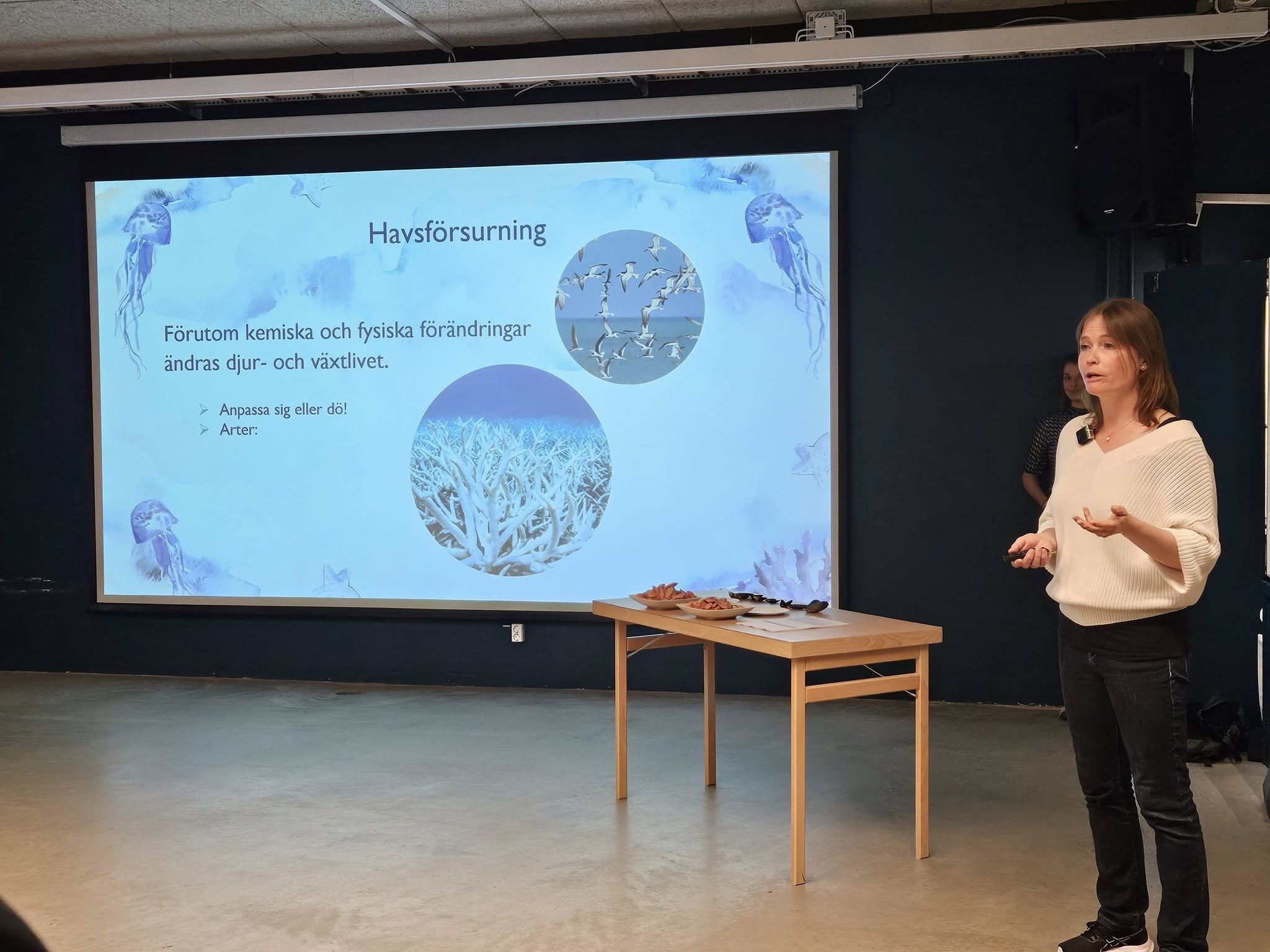
Applications of OA Science
Can You Taste Ocean Acidification?
When researchers from the University of Gothenburg in Sweden set out to explore how ocean acidification might impact a local species of shrimp, they had consumers in mind. Sam Dupont’s team exposed adult northern shrimp to seawater containing levels of carbon dioxide that are projected to occur in the near future. The survival rate of these shrimp decreased; those that survived acidified conditions were cooked and served alongside shrimp that were grown in today’s seawater conditions. A panel of locals judged the two side-by-side and declared the shrimp exposed to ocean acidification to be less appealing in appearance, texture, and taste. The results of this study helped prove the concept that ocean acidification can cause changes to seafood that the public can taste.
Dupont and colleagues worked with communication professionals from the University of Gothenburg and COMPASS to develop a press release that attracted broad international attention. However, public interest does not often translate to individual action. Dupont and his team want to help eaters connect the dots between climate change and the seafood they eat, in a way that will increase the willingness to change.
Dupont’s team of natural scientists collaborated with social scientists to co-create an interdisciplinary project to explore whether a sensory experience of ocean acidification through taste would drive an emotional response leading to an increase in the connectedness to the issue as well as willingness to accept or make changes to address ocean acidification and climate change. After organizing a few public taste-testing events, official follow-up experiments are now being performed across different age groups.
This project illustrates the importance of collaboration across scientific disciplines with a clear goal in mind to prioritize what kind of data are needed for a given purpose (e.g. increase the willingness to accept or make changes). This approach deviates from the classic "science supply paradigm" in which science is repurposed for communication without preliminary thoughts about the purpose.
Logistics
-
Natural and Social Scientists from the University of Gothenburg, including the Sea & Society Program
-
Initial biological experimentation began in 2014. Public engagement events were held in 2019 and follow-up interdisciplinary experiments are being performed in 2025.
-
Northern shrimp (Pandalus borealis) were exposed to two pH treatments in a laboratory experiment. Sensory quality was then assessed through semi-qualitative scoring by a panel of local connoisseurs. Other species are now being tested (e.g. the blue mussel Mytilus edulis)
Follow-up experiments performed in collaboration with social scientists evaluated how a seafood tasting and experiencing of ocean acidification impacts the learning outcome, emotional status and willingness to change.
-
Historical data allowed us to evaluate the present range of variability and define relevant ocean acidification scenarios.
-
We followed best practices for the characterization of the carbonate chemistry in biological experiments: two parameters of the carbonate chemistry (pHT, TA) as well as salinity and temperature.
-
Weather (biological experiment)
Objectives
This multi-study project aims to develop an effective strategy to increase the public’s willingness to change personal behaviors to address ocean acidification. Collaboration between natural and social scientists is necessary to collect data on the impact of ocean acidification on seafood taste and on the impact of sensory experience on the willingness to change.
Challenges
-
Interdisciplinarity is often forced, for example by fundings, and imbalanced. For example, a consortium of natural scientists will invite a social scientist to join a project without considering their needs. This can seriously compromise the success of such attempts.
Our project is based on a balanced relationship between natural and social sciences with a common purpose: prioritize natural sciences to increase the willingness to change to adress ocean acidification. This led to specific questions for natural scientists (What is the impact of ocean acidification on seafood taste?) and for social scientists (Does a sensory experience of ocean acidification increases the willingness to change?)
Along the way, we also had to engage with other actors such as chefs and communicators.
-
When it comes to eliciting action from the general public, standard information-based interventions struggle to change environmentally impactful behaviors. Information alone is a poor driver of change. This challenge must be taken into consideration when designing research projects meant to address issues related to climate change. Collecting scientific information for the sake of increasing our understanding is no longer enough. Researchers leading this OA project are aware of this challenge and are attempting to discover effect strategies for making a lasting impact.
-
As noted above, collecting scientific information for the sake of increasing our understanding is no longer enough. Scientists must change their approach to deviate from the current science-supply paradigm by collaborating early on with other disciplines to identify a larger goal and true data gaps. In order to have significant impact, researchers must design projects based on the desired outcome for clear action. On a personal and professional level, this requires researchers to operate outside of their comfort zone and to be willing to change how they typically do science.
For this OA project, researchers needed to leave the lab and engage with people at public events. The team took the time to listen to the average citizen to learn about what is important to them when it comes to seafood and the choices they make in their personal lives. From this challenging practice, researchers learned there is a difference between consumer preference and the willingness to change.

